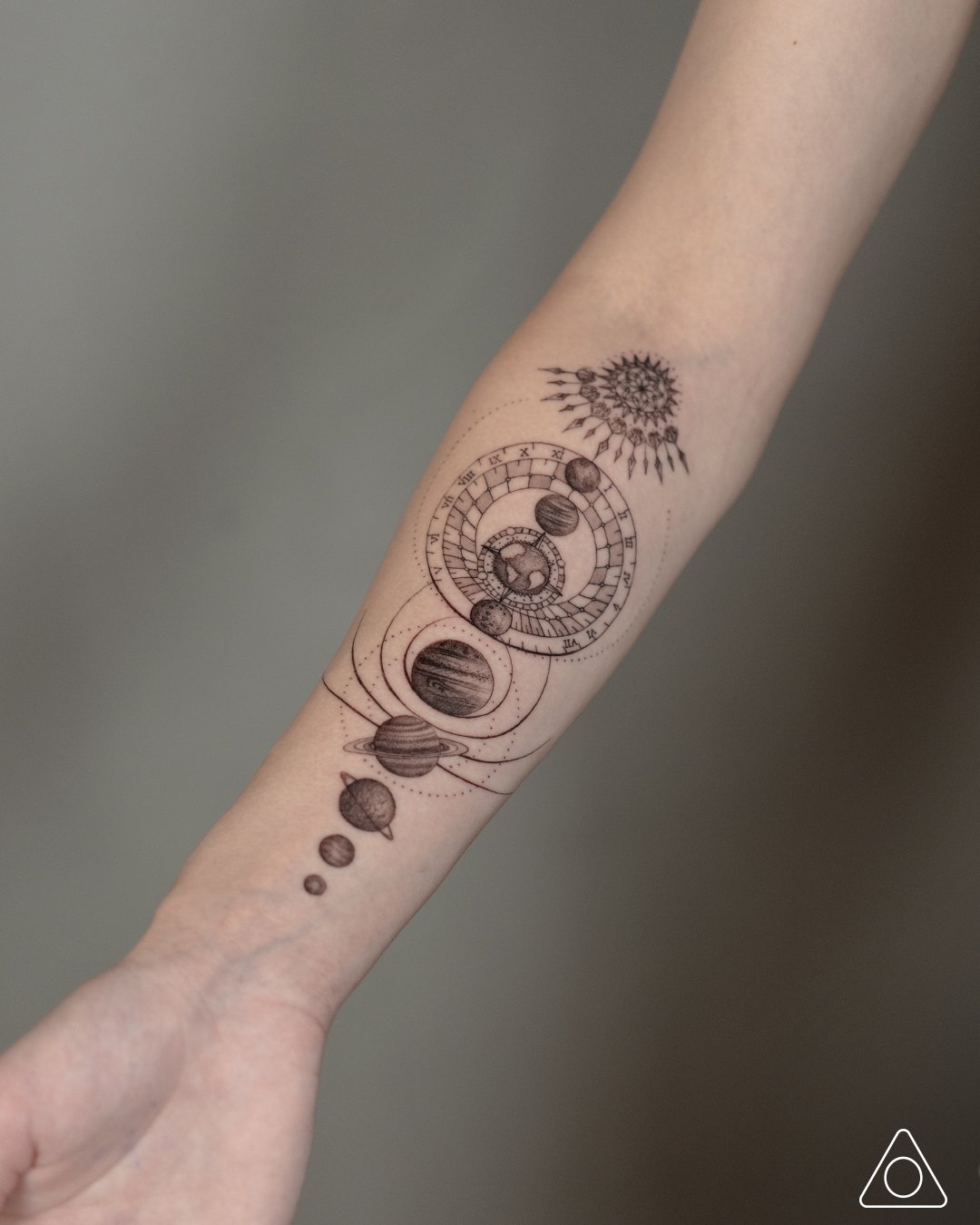
In recent years, geometric tattoo art has surged in popularity among tattoo enthusiasts and art lovers alike. Its appeal lies in the perfect harmony between symmetry, abstract shapes, and precise lines that create visually captivating designs. These tattoos are not only a form of self-expression but also an intricate blend of mathematics and artistry that transforms the body into a living canvas. Whether you’re drawn to minimalistic patterns or complex compositions, a geometric tattoo can be a stunning choice to elevate your personal style and showcase your appreciation for symmetry and design.
Geometric Tattoo

A geometric tattoo is characterized by its use of geometric shapes such as triangles, circles, squares, polygons, and lines to craft a cohesive visual narrative. Unlike traditional tattoos that often depict realistic imagery or symbolic motifs, geometric tattoos emphasize form, structure, and spatial relationships.
The core idea behind a geometric tattoo is to simplify complex images into basic shapes, which combine to produce intricate and harmonious patterns. This art form taps into the fundamental principles of geometry, creating visuals that evoke balance, order, and aesthetic elegance. Alongside their visual appeal, these tattoos often carry deeper meanings related to harmony, unity, and the interconnectedness of elements.
One of the reasons why geometric tattoos are so compelling is their versatility. They can range from bold, large-scale designs on the back or chest to delicate, fine-line patterns on the wrist or ankle. The clean lines and sharp angles lend themselves well to various styles, including blackwork, dotwork, and color accents. Moreover, the adaptability of geometric tattoo art makes it suitable for both men and women, allowing for personalized expressions that reflect individual tastes and philosophies.
The Origins of Geometric Tattoos
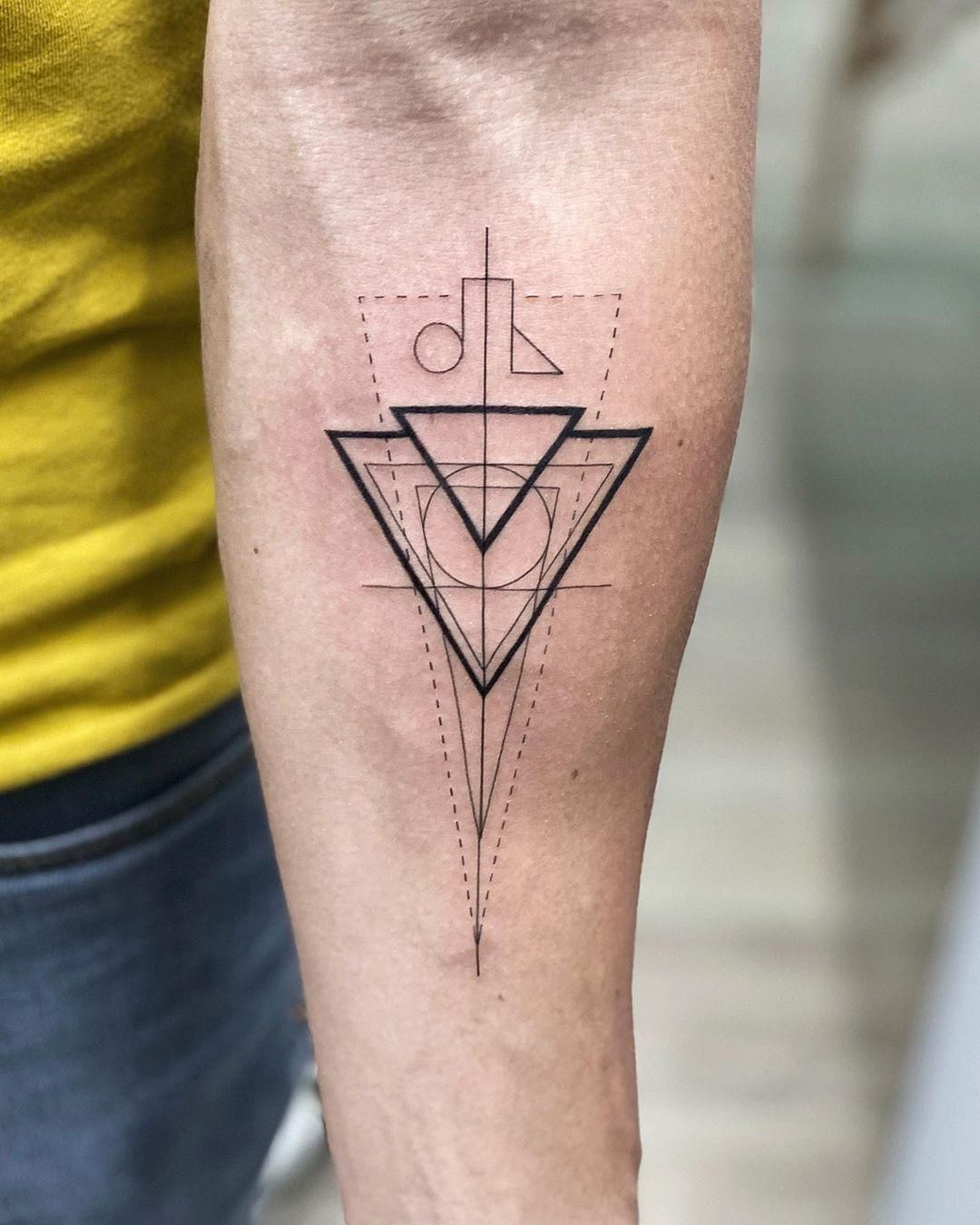
Historically, geometric motifs have been present in many ancient cultures. For example, Polynesian tribal tattoos incorporate geometric symbols representing spiritual beliefs, social status, and ancestral lineage. Similarly, sacred geometry—such as the Flower of Life or Metatron’s Cube—has been used in religious and philosophical contexts to symbolize the universe’s underlying order.
Modern geometric tattoos draw inspiration from these historical roots but adapt them into contemporary artistic expressions. The precision achieved with modern tattooing technology allows artists to execute complex patterns that once would be difficult to realize with traditional methods.
Why Choose a Geometric Tattoo?
Choosing a geometric tattoo goes beyond aesthetics; it reflects an affinity for structured beauty and intellectual curiosity about patterns in nature and the universe. For some, these tattoos symbolize stability, precision, and logical thinking. Others may see them as a way to connect with spiritual concepts rooted in sacred geometry.
Furthermore, geometric tattoo designs are highly customizable. They can incorporate personal symbols, meaningful numbers, or cultural motifs within the framework of geometric shapes, making each piece uniquely significant. Their timeless appeal ensures that they remain stylish and relevant regardless of evolving trends.
Geometric Tattoo Design

Designing a compelling geometric tattoo involves a thoughtful process that combines creativity, symbolism, and technical skill. A well-executed design has the power to convey complex ideas through simple yet powerful visual language.
When developing a geometric tattoo design, artists consider several factors: placement on the body, size, complexity, and personal significance. The design must complement the body’s natural contours, enhancing rather than disrupting the flow of the pattern. For example, a circular motif might align beautifully with the shoulder’s rounded shape, while angular patterns can accentuate limbs’ length and muscle structure.
An effective geometric tattoo design balances simplicity with detail. Minimalist designs, such as a single triangle or a small series of lines, can make a bold statement, while intricate compositions featuring multiple interlocking shapes can create mesmerizing effects. Combining different geometric elements allows for inventive designs tailored to individual personalities.
Customization and Personal Meaning
Custom geometric tattoo designs often incorporate personal elements—such as dates, initials, or cultural symbols—within the geometric framework. An artist may embed a meaningful pattern into a larger composition, transforming it into a visual story. For instance, a series of interconnected triangles could symbolize strength and stability, while fractal-inspired patterns might represent growth and expansion.
Design flexibility extends to color choices too. While many opt for classic black ink emphasizing stark contrast and clarity, others incorporate vibrant colors or subtle shading to add depth and dimension. The interplay of light and shadow in geometric designs can give a 3D illusion, making the tattoo more dynamic.
Collaborating with Artists
Creating a geometric tattoo design is a collaborative process between client and artist. Due to the precise nature of these patterns, clear communication about expectations, symbolism, and style preferences is essential. Many talented tattoo artists specialize in geometric art, possessing advanced skills in line work, symmetry, and shading techniques.
It’s advisable to review portfolios before selecting an artist, focusing on their experience with geometric shapes and patterns. A good artist will help translate your ideas into a feasible, aesthetically pleasing design that aligns with your vision and complements your body.
The Technical Aspects
From a technical perspective, designing a geometric tattoo involves meticulous planning. Digital tools like graphic tablets and design software enable artists to sketch patterns with exact measurements and symmetry. Once the design is finalized, a stencil is created for transfer onto the skin, ensuring precision during the actual tattooing process.
The geometric tattoo design also considers the potential for future modifications or additions. Symmetrical patterns lend themselves to expansions, like growing a tattoo into a larger geometric sleeve or integrating additional elements over time.
Geometric Tattoo Stencil
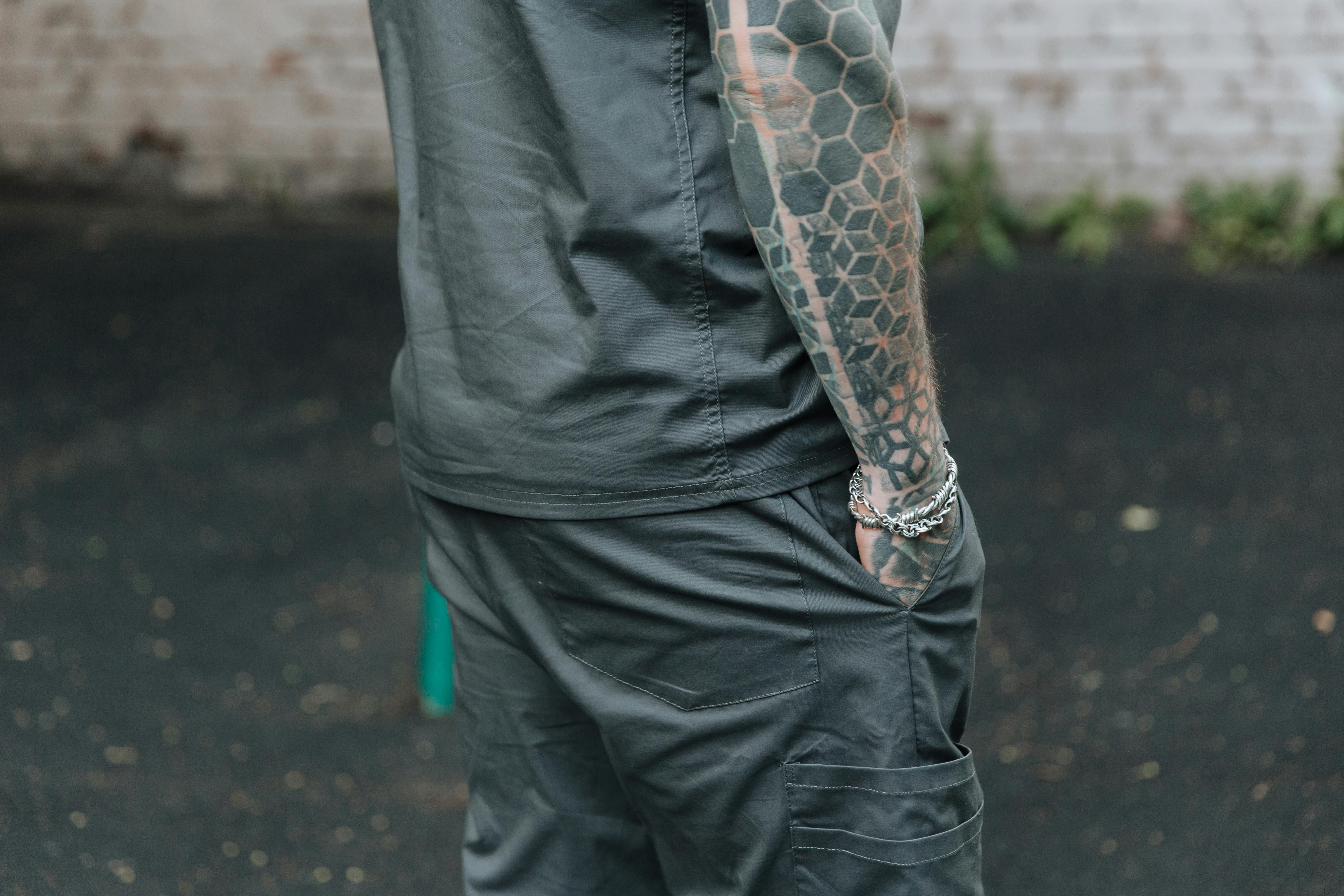
The geometric tattoo stencil is the blueprint that guides the tattoo artist in executing the final design. It acts as a temporary template, ensuring that the rigid lines and precise shapes are accurately transferred onto the skin before the actual tattooing begins.
Creating an effective stencil requires both artistic skill and technical understanding. The goal is to preserve the integrity of the geometric tattoo design while adapting it to the unique contours of the client’s body. Breakthroughs in digital design tools have made stencil creation more accurate, enabling detailed patterns that would be challenging to replicate freehand.
Once the stencil is applied, the artist assesses the layout, symmetry, and placement. Fine adjustments may be made at this stage to enhance visual harmony and ensure the pattern flows naturally with the body’s shape.
Types of Stencils Used in Geometric Tattoos
There are various methods for creating stencils, each suited to different styles and complexities:
- Traditional carbon paper stencils: Using carbon paper to trace the design directly onto the skin.
- Thermal imaging stencils: Employing thermal printers or machines that scan digital designs and produce a transfer sheet.
- Freehand stencils: For more organic or asymmetrical geometries, some artists may use freehand techniques, combining digital guides with manual drawing.
Each method offers different advantages regarding accuracy and ease of application. For geometric tattoo designs, high precision is critical, especially when working with repetitive patterns or symmetrical motifs.
Ensuring Accuracy and Precision
The purpose of the geometric tattoo stencil is to eliminate guesswork, providing clear guidelines for needle placement and line work. Accurate stencils minimize mistakes during tattooing, saving time and reducing discomfort for the client.
To achieve this, artists often double-check the stencil alignment against anatomical landmarks. They may also perform test runs or lightly mark areas to visualize how the pattern will appear once completed. The stencil serves as a tactile and visual reference throughout the tattoo process.
Reusability and Longevity
While most stencils are intended for one-time use due to hygiene standards, modern digital methods allow for quick reproduction of identical stencils if modifications are needed. Consistent stencil quality guarantees uniformity in pattern replication across multiple sessions or when replicating the same design on different clients.
Proper skin preparation and stencil application are essential to prevent smudging or distortion. Well-executed stencils lay the foundation for a flawless geometric tattoo that remains sharp and precise over time.
Geometric Tattoo Ideas

The possibilities for geometric tattoo ideas are virtually limitless, reflecting diverse themes, symbols, and personal narratives. From minimalist symbols to elaborate masterpieces, incorporating geometric elements into tattoo designs can evoke feelings of harmony, order, and beauty.
Whether you prefer sleek lines, intricate fractals, or a fusion of organic and geometric forms, creative geometric tattoo ideas allow for genuine self-expression. Here are some inspiring concepts to spark your imagination:
- Sacred geometry motifs like the Flower of Life or Metatron’s Cube.
- Abstract animal silhouettes composed of polygonal shapes.
- Mandala-inspired patterns emphasizing symmetry and balance.
- Futuristic or sci-fi themes with interconnected geometric grids.
- Personal symbols encased within geometric frameworks, such as initials or meaningful icons.
Popular Geometric Tattoo Ideas
Some ideas have gained popularity due to their versatility and deep symbolism. These include:
- Geometric animals (lions, wolves, birds)
- Architectural and cityscape outlines in geometric form
- Geometrically stylized human faces or figures
- Cosmic patterns like planets and stars in geometric renderings
- Nature-inspired designs, such as mountains or trees formed with triangles and lines
Integrating these ideas into your tattoo allows you to express complex concepts visually and aesthetically.
Combining Styles and Elements
Blending geometric tattoo ideas with other styles enhances their uniqueness. For example, combining watercolor splashes with geometric outlines creates contrasting textures; adding dotwork details can provide depth, while incorporating typography or script adds narrative context.
Personalized geometric tattoo ideas should resonate with your beliefs, experiences, or aesthetic preferences. Consulting with a skilled tattoo artist can help translate your ideas into custom designs that fit your body and personality.
Practical Considerations
When exploring geometric tattoo ideas, consider factors such as placement, size, and visibility. Simpler designs are often best suited for small areas like wrists or ankles, while more complex patterns can make impactful statements on larger surfaces like the back, chest, or sleeves.
Remember that the longevity of geometric designs depends on proper care. Sharp lines and vibrant patterns require diligent aftercare to prevent fading or blurring over time.
Geometric Tattoo Patterns
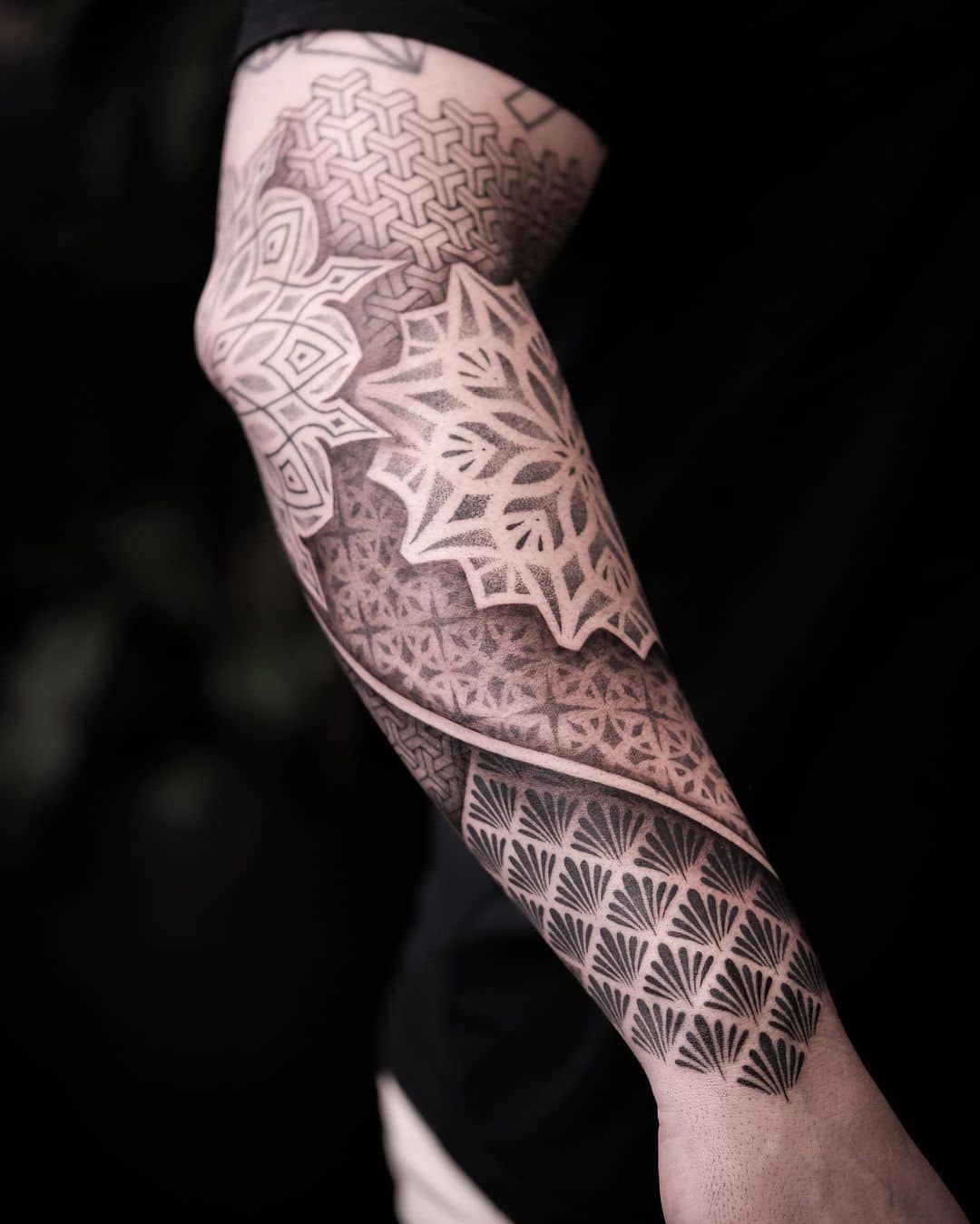
Geometric tattoo patterns form the foundation of many stunning designs. These patterns, whether repetitive or unique, serve as the building blocks of complex artwork and play a vital role in defining the overall aesthetic.
Understanding different types of geometric tattoo patterns helps in choosing a design that aligns with your vision. These patterns can be symmetrical or asymmetrical, repetitive or random, and often incorporate mathematical properties like tessellation, fractals, and symmetry.
Below are some popular categories of geometric tattoo patterns:
- Mandalas and radial symmetry
- Tessellations and tiling patterns
- Fractal designs inspired by natural forms
- Interlocking polygons and polyhedra
- Line-based linear patterns and grids
Mandalas and Radial Patterns
Mandalas are circular designs that radiate outward from a central point. They symbolize unity and wholeness and are often used in spiritual practices. Their intricate, repetitive patterns make them ideal for geometric tattoo patterns that emphasize symmetry and balance.
Creating a mandala involves meticulous planning to ensure even spacing and proportionate sections. When tattooed on the body, they can be placed on the chest, back, or thighs to serve as focal points.
Tessellations and Tiling
Tessellation patterns involve repeating shapes that fit together without gaps or overlaps, creating seamless visual textures. These patterns are inspired by mathematics and art, found in everything from Islamic mosaics to modern architectural designs.
In tattoos, tessellations can be stylized into geometrical animal skins, abstract backgrounds, or decorative borders. Their repetitive nature lends itself well to large surfaces like arms or shoulders, where continuous flow enhances the overall effect.
Fractal Geometries
Fractals are infinitely complex patterns that repeat at different scales—a concept derived from chaos theory and natural phenomena like snowflakes, coastlines, or fern leaves. In tattoo art, fractal patterns evoke a sense of natural harmony and infinite complexity.
These designs are particularly striking when combined with shading and color gradients, giving depth and movement to the tattoo.
Interlocking Polygons and Polyhedra
Using interconnected triangles, squares, and other polygons, artists can create complex three-dimensional illusions or abstract sculptures. These patterns are often used to symbolize stability, structure, and connectivity.
Applying polyhedral patterns can give a futuristic or tech-inspired look, especially when rendered with metallic or neon hues.
Line-Based and Grid Patterns
Minimalist line patterns, such as parallel lines, chevrons, or grid layouts, are elegant representations of geometric concepts. They lend themselves to subtle, understated tattoos that emphasize form over detail.
Grid patterns can serve as the backbone for more elaborate designs, providing a structured framework for layered elements.
Choosing the Right Pattern for You
When selecting a geometric tattoo pattern, it’s important to consider how it aligns with your personality and aesthetic preferences. Larger, detailed patterns suit those seeking a bold statement, while smaller, simpler patterns cater to minimalists.
Additionally, the pattern’s cultural and symbolic implications should resonate with your personal beliefs or experiences. Collaborating with an experienced artist can help customize patterns to reflect your story while maintaining the integrity of geometric principles.
Conclusion
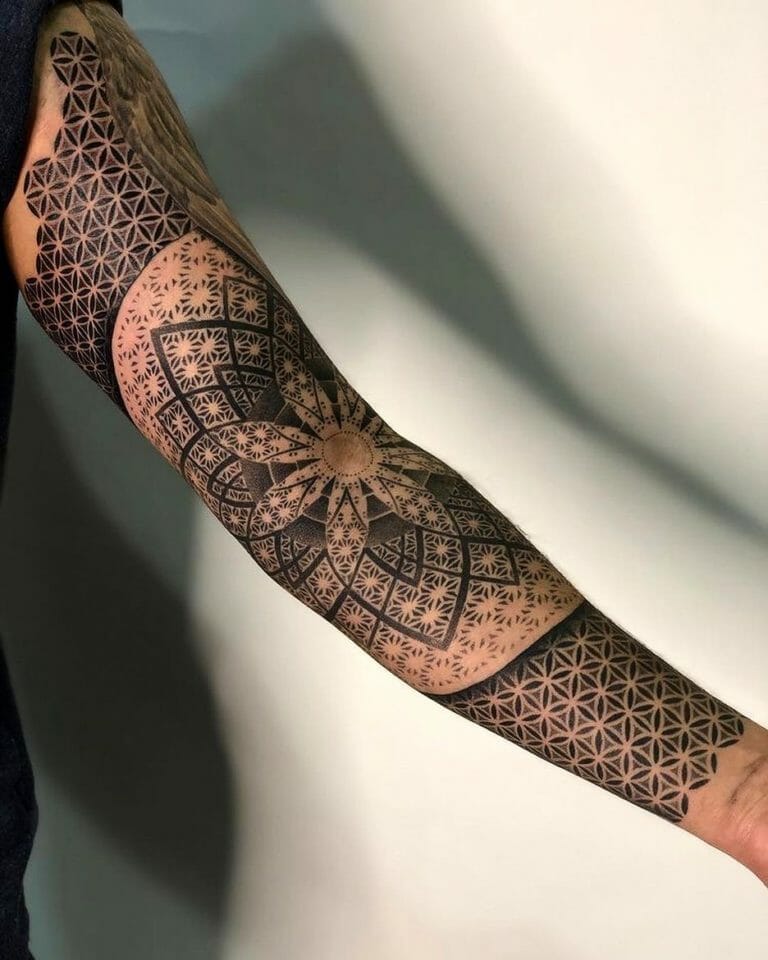
Transforming your body with stunning geometric tattoos offers a remarkable way to merge art, science, and personal symbolism into a cohesive expression. From meticulously crafted geometric tattoo designs and precise stencil execution to innovative ideas and intricate patterns, this art form provides endless possibilities for customization and meaning. Embracing the harmony of symmetry and abstraction not only elevates your aesthetic but also signifies a connection to universal principles of order and interconnectedness. As you explore the vast realm of geometric tattoo options, remember that thoughtful design and collaboration with skilled artists are key to achieving a captivating, enduring piece of body art that truly transforms your appearance and identity.

